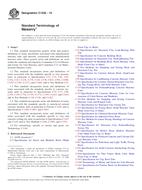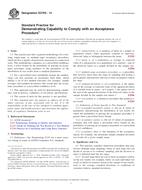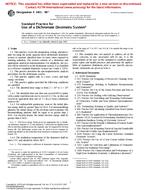1.1 This practice describes a general procedure for using the process compensated resonance testing (PCRT) via swept sine input method to identify metallic and non-metallic parts' resonant pattern differences that can be used to indentify parts with anomalies causing deficiencies in the expected performance of the part in service. This practice is intended for use with instruments capable of exciting, measuring, recording, and analyzing multiple whole body mechanical vibration resonant frequencies within parts exhibiting acoustical ringing in the audio, or ultrasonic, resonant frequency ranges, or both. PCRT is used in the presence of manufacturing process variance to distinguish acceptable parts from those containing significant anomalies in physical characteristics expected to significantly alter the performance. Such physical characteristics include, but are not limited to, cracks, voids, porosity, shrink, inclusions, discontinuities, grain and crystalline structure differences, density related anomalies, heat treatment variations, material elastic properties differences, residual stress, and dimensional variations.
1.2 This practice uses inch pound units as primary units. SI units are included in parentheses for reference only, and are mathematical conversions of the primary units.
1.3 This standard does not purport to address all of the safety concerns, if any, associated with its use. It is the responsibility of the user of this standard to establish appropriate safety and health practices and determine the applicability of regulatory limitations prior to use.
Product Details
- Published:
- 03/01/2010
- Number of Pages:
- 8
- File Size:
- 1 file , 340 KB


